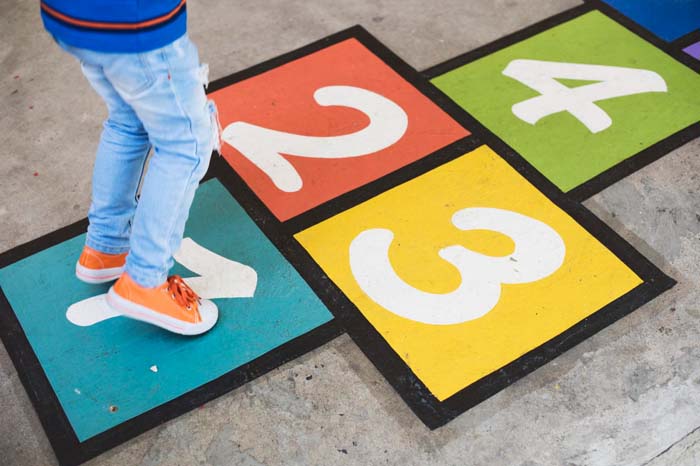The soft spot on a baby’s head, medically known as the fontanelle, is a feature that often concerns many new parents. Understanding how to care for this delicate area is crucial for the well-being of your baby. This article will explore the nature of the soft spot, its importance, potential dangers, and how to safely manage it, including considerations regarding headbands and signs of health issues like a sunken soft spot.
What is the Soft Spot?
The soft spot is a gap in the skull where the bones haven’t fused together yet. It’s located at the top of a baby’s head and is crucial for both childbirth and brain growth. The flexibility provided by the soft spot allows a baby’s head to pass through the birth canal and also enables the brain to grow rapidly during the first year of life.
The Role of Fontanelles
There are actually two major fontanelles on a baby’s head: the larger anterior fontanelle, located on the top of the head, and the smaller posterior fontanelle, at the back of the head. These soft spots are covered by a tough membrane that protects the underlying brain.
Caring for the Soft Spot
- Gentle Handling
- Avoiding Pressure
- Monitoring for Changes
Gentle handling is key when caring for your baby’s soft spot. While it’s protected and not as fragile as it might seem, it’s still important to be gentle when touching or washing your baby’s head.
Avoid putting unnecessary pressure on the soft spot. This includes being mindful of how you hold your baby and avoiding tight headwear that might press down on this area.
Regularly checking the soft spot can provide important clues about your baby’s health. A sunken soft spot, for instance, can be a sign of dehydration, while a bulging soft spot might indicate increased pressure inside the skull.
Soft Spot on Baby Head Danger
While the fontanelle is relatively safe from minor bumps, severe or direct trauma to the soft spot can be dangerous. It’s essential to protect your baby’s head from significant impacts and to consult a healthcare provider if you have any concerns about a head injury.
Headbands on Babies’ Soft Spot
When it comes to dressing your baby, be cautious with headbands or hats. Ensure that any headwear is loose enough not to apply pressure on the soft spot. Tight headbands can not only cause discomfort but also potentially exert harmful pressure on this delicate area.
Sunken Soft Spot on the Top of the Baby’s Head
A sunken soft spot is often a sign of dehydration. Babies can become dehydrated more quickly than adults, so it’s important to monitor their fluid intake, especially if they are sick. If you notice the soft spot sinking, it’s important to seek medical advice promptly.
When to Worry
While the soft spot is a normal part of your baby’s anatomy, certain signs warrant medical attention:
– A significantly sunken soft spot – A bulging soft spot – The soft spot feels very hard or very soft – Signs of illness, such as fever or irritability, combined with changes in the soft spot
Continuing our exploration of caring for the soft spot on a baby’s head, let’s delve deeper into how to recognize and respond to potential concerns, and understand the natural progression of this unique aspect of infant development.
Recognizing Normal Changes in the Soft Spot
- Gradual Closure
- Variation in Size
The soft spot on a baby’s head gradually closes as they grow. The posterior fontanelle usually closes by the time the baby is 1 to 2 months old, while the larger anterior fontanelle might take up to 18 to 24 months to fully close. This process is a natural part of skull development.
The size of the soft spot can vary significantly from one baby to another. A larger or smaller fontanelle isn’t necessarily a cause for concern unless accompanied by other symptoms or developmental issues.
Handling Common Concerns
- Head Shape
- Touching the Soft Spot
As the soft spot closes and your baby grows, you might notice changes in the shape of their head. Conditions like plagiocephaly (flat head syndrome) are common and often resolve with time and proper positioning.
It’s okay to gently touch or wash over the soft spot. The area is protected by a tough membrane, making it safe to lightly run a washcloth over the head during bath time.
Advanced Care and Precautions
- Protective Measures
- Safe Sleeping Environment
While the soft spot is robust, it’s wise to take precautions to protect your baby’s head. Use a baby helmet or protective gear when engaging in activities that could potentially lead to a fall or head injury.
Ensure your baby has a safe sleeping environment. This includes a firm mattress and keeping the crib free of pillows, toys, and loose bedding to reduce the risk of accidents.
Monitoring and Consultation
- Regular Check-ups
- Signs of Underlying Conditions
Regular pediatric check-ups are essential for monitoring the progress of the soft spot closure and overall skull development. Your healthcare provider can offer reassurance and advice if there are any abnormalities.
While rare, abnormalities in the size and closure rate of the soft spot could indicate underlying conditions. Early intervention is key in such scenarios.
Educational and Emotional Support for Parents
- Seeking Information
- Emotional Well-being
Educating yourself about the developmental stages of your baby, including the soft spot, can alleviate worries. Utilize resources like parenting books, reputable online sources, and advice from healthcare professionals.
It’s normal to feel anxious about your baby’s health and development. Don’t hesitate to seek emotional support from friends, family, or parenting groups. Sharing experiences and concerns with others can be incredibly reassuring.
The soft spot on your baby’s head, much like the gentle touch needed during a newborn bath, is a natural and important part of their development. By understanding how to care for it and what signs to look out for, you can ensure your baby stays healthy and comfortable. Remember, while the fontanelle might seem vulnerable, it’s well-protected and usually not a cause for concern.
At EuroKids, we understand the anxieties that come with newborn care, including the proper management of your baby’s soft spot. We’re here to support and guide you through these early stages of parenthood, ensuring you feel confident and informed.















